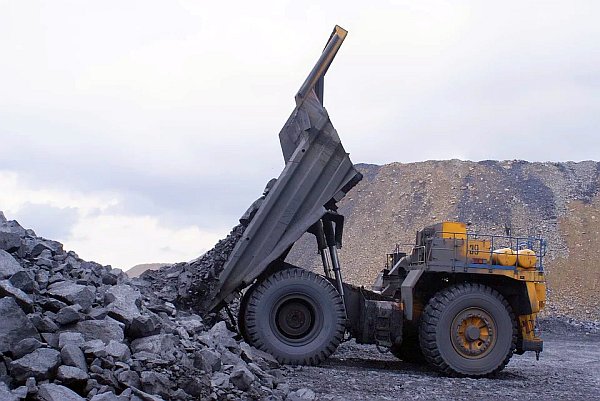
Historically, coal liquefaction resupplied dwindling energy stocks where secure supplies of petroleum were unavailable. Liquefaction turns a solid into a liquid, such as gasoline diesel and kerosene.
Coal Into Liquid Fuel
So what is coal liquefaction? Wow, so we can actually make gasoline, diesel, and jet fuel from coal? That’s right! we can actually turn those chunks of black diamond into gasoline, diesel, and kerosene.
Oil Reserves Shrinking
Everyone knows the worlds oil reserves are shrinking. This fact makes the vast coal reserves very very attractive as an alternatives fuel source. Oil, gas and coal form the nations energy triad. So with the advent of clean coal technology such as coal gasification, coal liquefaction and fluidized bed combustion, plentiful clean burning supplies that can be produced cost effectively.
What’s Holding Coal Liquefaction Back?
So why haven’t we begun using this resource if we’ve got all of this great technology? Because, well you know, the global warming climate change sky is falling bunch. Even as new gas and oil discoveries have dulled the threat of eminent fuel shortages, a certain reluctance to commit to using coal energy, even more efficiently runs into road block after road block.
So with the drum beat of energy reserves diminishing worldwide and prices escalating, coal liquefaction and gasification technologies, form a logical options to strengthen the triad.
An Uphill Struggle
However, clean coal technology still face an uphill struggle — go figure! Major sources of U.S. Energy by percentage: Petroleum 40%, Natural Gas 25%, Coal 23%, Renewables 12%.
Note: Renewables include hydroelectric, nuclear, geothermal, solar, wind and tidal.
Oil Consumption by Use
Personal Vehicles 33.0%
Trucking 20%
Petrochemicals 11.5%
Industrial Heat 8.3%
Air Transportation 7.6%
Heat and Power 7.3%
Water Transport 2.7%
*Other 8.1%
Unfortunately, the hydroelectric generating capacity actually declined from 1997 from 10.2 percent to 6.0 percent in 2007. Yet renewable energy sources less hydroelectric power rendered only 2.5 percent of the total.
Demonized Energy Sources
Actually, the net generation of the renewables has increased, but nothing close enough to solve demonized nuclear, global warming fossil fuels or fish killing hydroelectric dams. So what does all this mean anyway?
Three words: Higher-Energy-Prices.
During the ten year period from 1997 to 2007 coal natural gas and nuclear energy accounted for 84.6 to 89.5 percent of the total net generation during that period. Petroleum played a minor part with only 1.6 percent in the net generation of that period.
In the mean time, advanced coal liquefaction utilizing borane catalysts, where boron-hydrogen compounds react with coal hydrating it with the hydrogen. Following this; liquefaction uses conventional hydrocraking is used for ultra clean coal.
Who’s Afraid of Clean Coal Technology?
However, the environmental movement is deathly afraid that clean coal technology will be taken seriously. In their view, coal liquefaction is a waste of time. To them, energy independence is a nation where solar and wind power ultimately takes the place of oil coal natural gas and nuclear.
Nuclear and Hydroelectric Power
I don’t know exactly where natural gas fits into their game plan, but by now, the uninformed believe that nuclear power is demon possessed. That leaves hydroelectric power but tree huggers put the kibosh to that too. They fret and stew about dams killing fish. Yet none of them will ever openly admit that energy independence is really a nation on bicycles.
Fluidized Bed Combustion
Meanwhile, around the globe, China is building coal plants using various clean technologies, including Coal Gasification, and Fluidized Bed Combustion.
So what is Fluidized Bed Combustion? It’s ultra clean combustion. Briefly, jets of hot air tumble the coal dust like bubbling fluid while it’s burned. Predictable levels of CO2 are well known and technology has taken steps, e.g. Waste to Watts to reduce such concentrations.
We Have the Technology
Efforts have thus far been successful. In short, we have the technology to produce clean burning coal, but CO2 exists. The raises an interesting question: is CO2 bad stuff or good stiff. It’s a given, there’s a natural balance in nature. One such system is the complex means plants use CO2 to produce sugar for growth and how they slough off the oxygen as waste.
What Do I Know?
By the way, don’t we breathe that stuff? And as far as green house gases go, I always got a kick the way the sun evaporates sea water drawing it up into clouds. Doesn’t that make H2O a green house gas too? Anyway, what do I know. Maybe I should learn cum-by-ahh.


